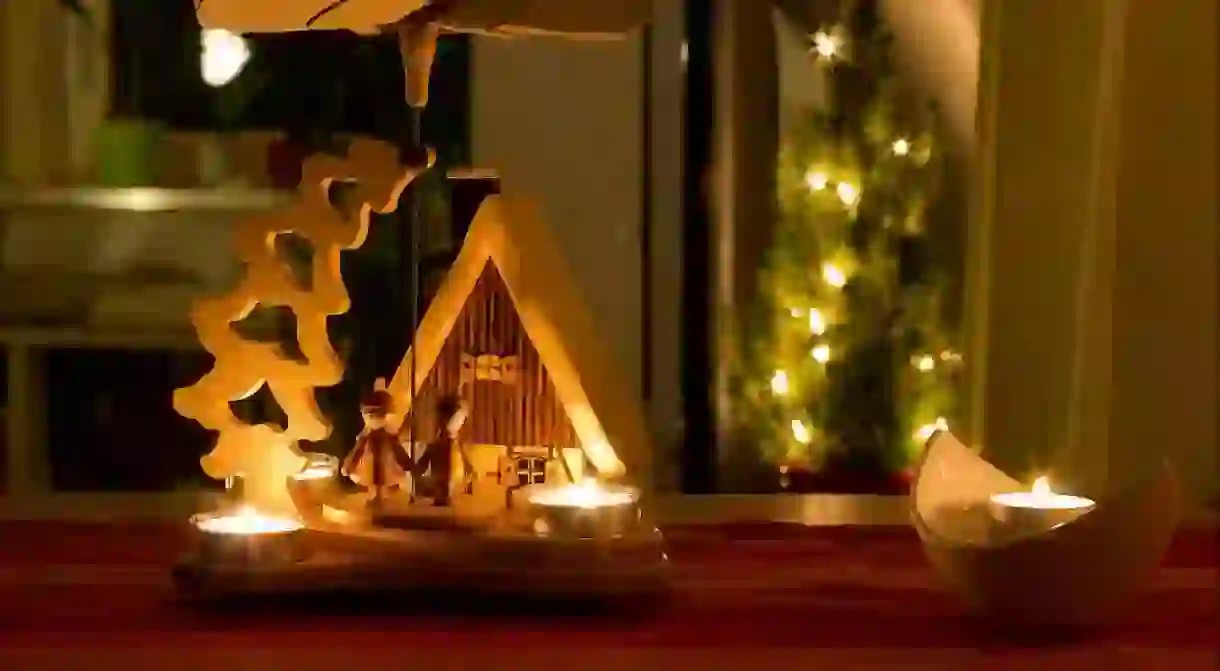11 Reasons Why Germany's Ore Mountains Sparkle During Christmas

No matter how hard you search, it just doesn’t get more Christmassy than in Germany‘s Ore Mountains (Erzgebirge). During this time, the picture-postcard mountain towns are blanketed in snow and bathed in twinkling lights, creating a spectacle that is beyond splendid. Other than hosting some of the most magical Christmas markets in the country, the natives of this region practice Christmas rituals and traditions that have been lovingly preserved for generations. Let’s go on a fascinating journey together to discover what makes Christmas so special and unique in the Ore Mountains – often called the Home of Christmas.
Wood carvings
The Ore Mountain region, especially Seiffen, is the heart of wooden toy carving and the creation of irresistible Christmas decorations. During Christmas time, the quaint towns and houses in the Ore Mountains are decorated with handmade wooden pyramids, candle arches, nutcrackers, miner figures, music boxes, and dolls, each exhibiting admirable artistry. As far as souvenirs go, you can’t do better than one of these beautiful specimens from a Christmas market or a workshop.

Smoking Man
Christmas decorations
The Ore Mountain region was a mining region for centuries, until a mining crisis pushed the inhabitants toward wooden toy making. However, still today, each window, street, and square in the mountain towns is brilliantly lit up in honor of the miners who spent most of their lives in the dark bowels of the earth. The most common decorations include Christmas pyramids, candle arches, and white candles. Many of these displays are miner-themed.

Christmas Festival at Scharfenstein Castle
Market
Lichtelfest in Schneeberg
Market, Market
The Mettenschicht
The Mettenschicht is a 17th-century custom from the mining days. It refers to the last shift that the miners worked before Christmas, which used to end earlier than usual, and was followed by music and a traditional meal. Like all Ore Mountain region traditions, this ritual has also been preserved for centuries and honored even today, with meals, folk festivals, and music.
Miners’ parades
The miners’ parades (Bergparaden) are another expression of the natives’ pride for their mining history. Back in the mining days, the miners used to dress up in their traditional uniforms, carry their tools, and parade in honor of visiting noblemen with the accompaniment of music. Today, several such parades are held across the Ore Mountain towns in honor of their roots. Hundreds of thousands of people line the sidewalks to watch these processions.

Snow-covered Fichtelberg
Neunerlei
On Christmas Eve, natives dig into a special feast called Neunerlei. This meal consists of nine courses, with a symbolic meaning attached to each. Neunerlei traditionally includes lentils or peas, sausages, fish and apple salad, rose hip soup, roasted pork, bread with salt, potato salad, prunes and a mash of bread, milk and nuts. These courses symbolize memories, achievements, and hopes and are believed to bring good luck in the coming year. Neunerlei is usually served in a plate with nine compartments.

Hutzenohmd
Traditionally, people in the Ore Mountains used to get together during Christmas to eat, play music, carve wood, and make lace. The main purpose of these gatherings (Hutzenohmd) was to save heating and light. Even today, the natives of this region get together with loved ones to keep the tradition alive.
Santa Claus workshops
The most beloved part of the gorgeous Annaberg Christmas Market is the Santa Claus Workshop. Here, you can catch the elves busy at work, and even have a gnome show you around. You can admire the beautiful traditional handcrafted items on display here or get a favorite Christmas item repaired by an expert. That’s not all – visitors are welcome to build little presents of their own or bake a few biscuits.














